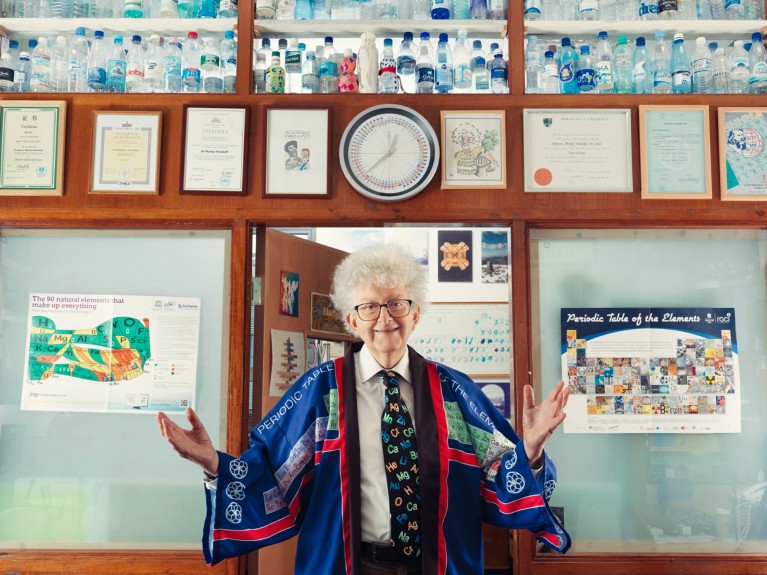I usually apologize for the mess when people enter my office. There are dozens of periodic tables, hundreds of plastic bottles, pictures all over the walls, books going up to the ceiling and various old bits of apparatus that people wanted to throw out.
I’m a green chemist, interested in processes that generate as few hazardous by-products as possible. I’m part of a big project called Photo-Electro, funded by Britain’s Engineering and Physical Sciences Research Council, that aims to minimize the amount of chemicals and solvents, and the number of processing steps, needed to construct complex molecules. For example, we study ways to use light and electricity to produce chemicals more efficiently.
But I’m perhaps better known as a popularizer of the periodic table. I have all sorts of objects inspired by it in my office: a large collection of periodic-table neckties, a now-empty box of periodic-table chocolates, and even a periodic table engraved on a strand of my own hair.
I also have a lot of toys that I play with: a dog toy that looks like carbon-60, various Rubik’s cubes — I can’t do Rubik’s cubes, but they’re fun to fiddle with — and silly things like a plastic frog that, when you squeeze it, produces fake spawn.
A big challenge for all scientists is to come up with new ideas. Workshops on creativity usually have toys lying around. Nobody is suggesting that a toy frog is necessarily going to inspire us to, say, use frog slime to produce a reaction. But I think that having lots of pictures, lots of toys hanging around is a good way of relaxing the mind and fostering innovation.
As for the plastic bottles, I had a long-running project trying to make the plastic in a greener way. We succeeded, but on a small scale, and the company decided it wasn’t worth scaling up. Nonetheless, I learnt a lot, and the bottles are a good conversation starter. As it turns out, quite a lot of people enjoy being in my office.


 Engineering a dream workspace
Engineering a dream workspace



